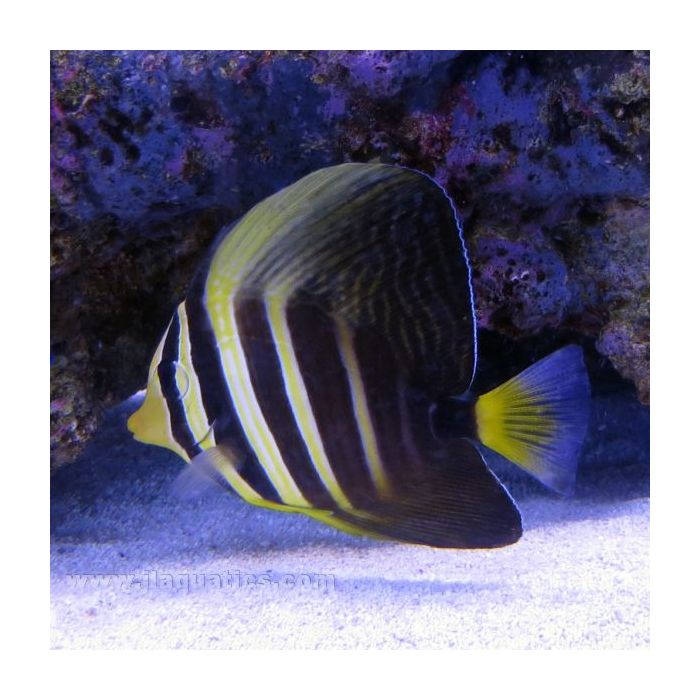Sailfin Tang (Indian Ocean)
The Sailfin tang has some of the most impressive finnage of any surgeonfish. When fully extended its dorsal and anal fins are absolutely massive, giving it a huge presence and a unique shape. The Sailfin from the Indian Ocean is less commonly imported, and sports patterns which may fall somewhere between its Philippines and Red Sea counterparts. This always includes strongly contrasting stripes extending vertically down its body, alternating from pale cream to deep chocolate. Males and females are visually identical.
The Sailfin tang can grow to be approximately 15 inches long and needs a large aquarium as an adult, we recommend at least 250 gallons or larger.
Tangs in the genus Zebrasoma can be quite feisty, often chasing other fish in the aquarium. They don't appreciate living with other tangs, especially others with the same shape. If they are to be kept with other tangs they should be added last, and the aquarium of sufficient size.
Tangs are also called surgeonfish or doctor fish because they have at least one spine just in front of the tail which, when the tail is bent, can be stuck out and used as a threat display or weapon against competitive fish or predators. It is important to be cautious of this spine when handling the fish in a net. They feel most secure when there is plenty of live rock to hide in, as well as open space for swimming. In the wild some tangs live in schools, however in the confines of an aquarium it is usually best to have only one of each genus, or they may be extremely aggressive to each other. They are typically very peaceful with other types of fish.
Care should be taken with tangs to ensure they do not catch external parasites, such as Marine ICH and velvet, to which they are very prone.
Tangs do not eat coral or invertebrates and are considered reef safe. They are primarily herbivorous, and although they love to eat meaty foods, they must be fed plenty of marine algae in order to remain healthy and vigorous. Having a proper diet may also reduce aggressive behaviors; tangs naturally graze on algae throughout the day. Diet should include plenty of marine algae and Spirulina, frozen mysis shrimp, and other high quality items. They typically learn to eat dry foods easily. It is preferable to feed more than once a day, with an algae clip offered approximately every other day.
















